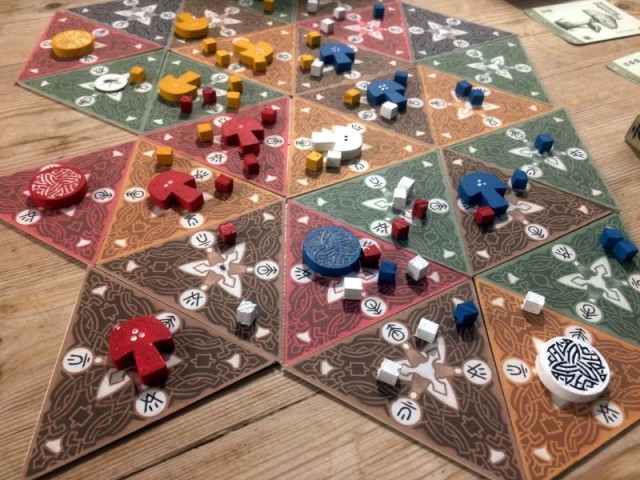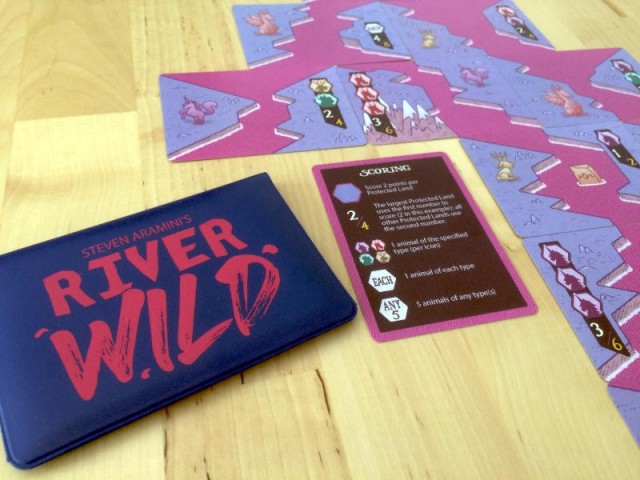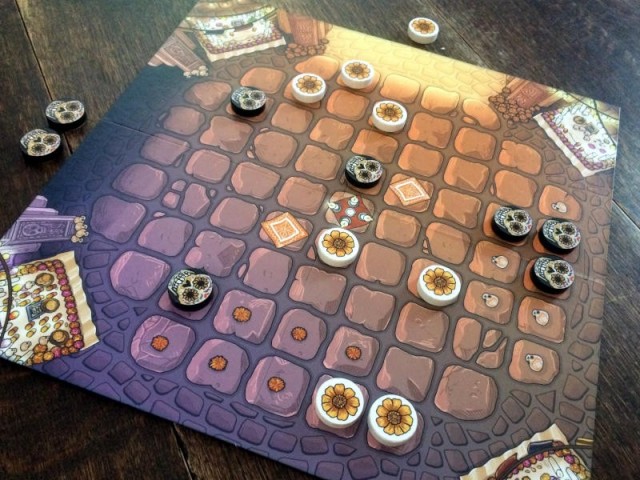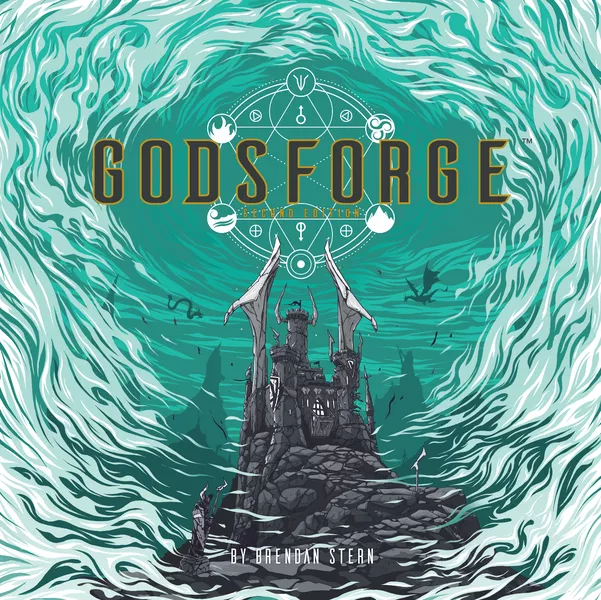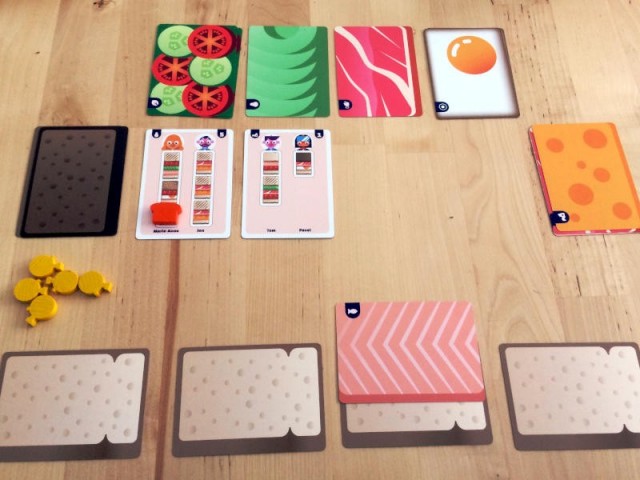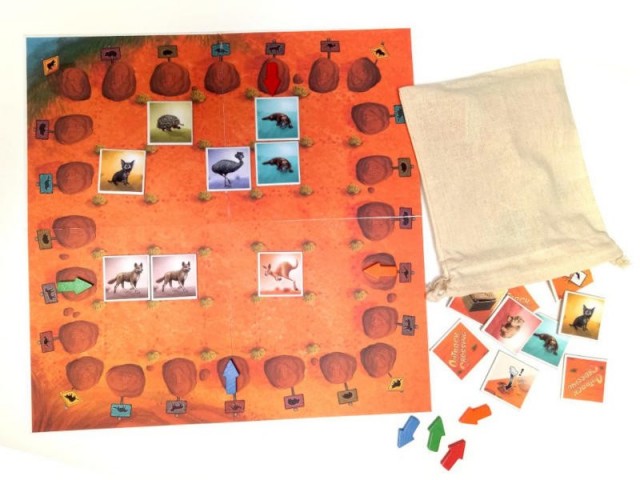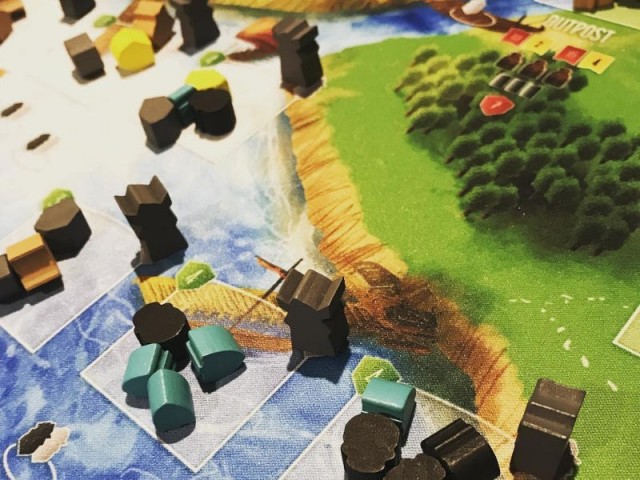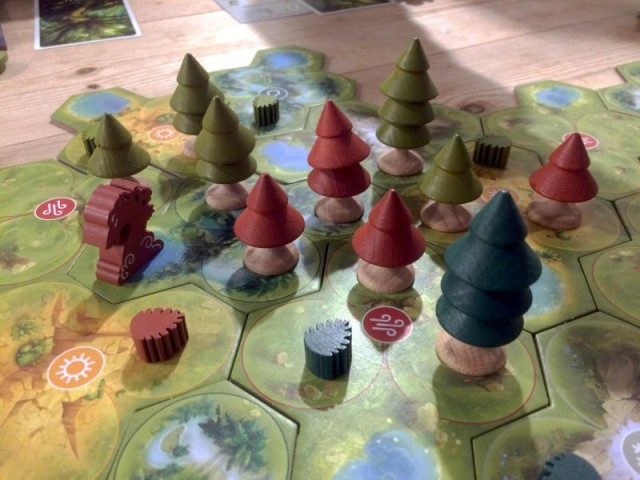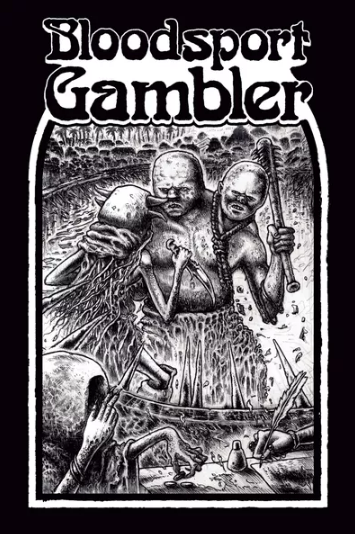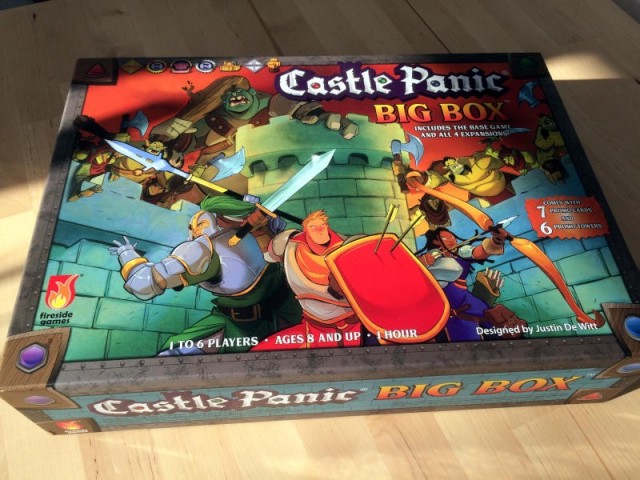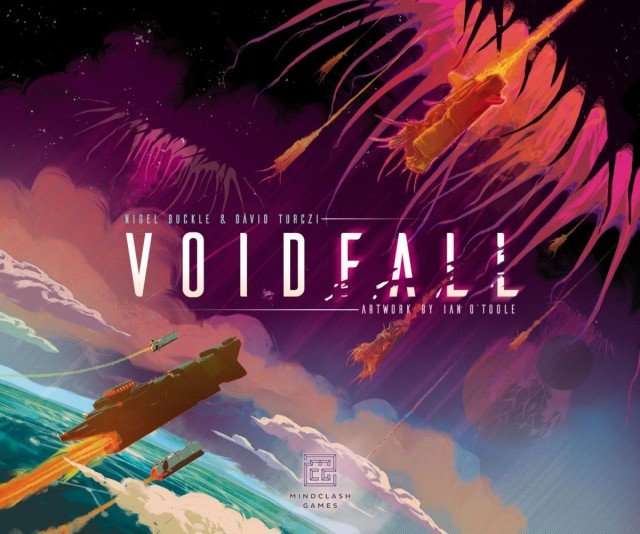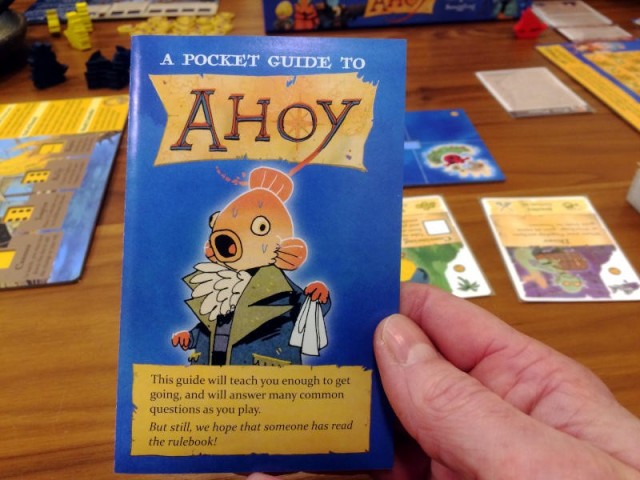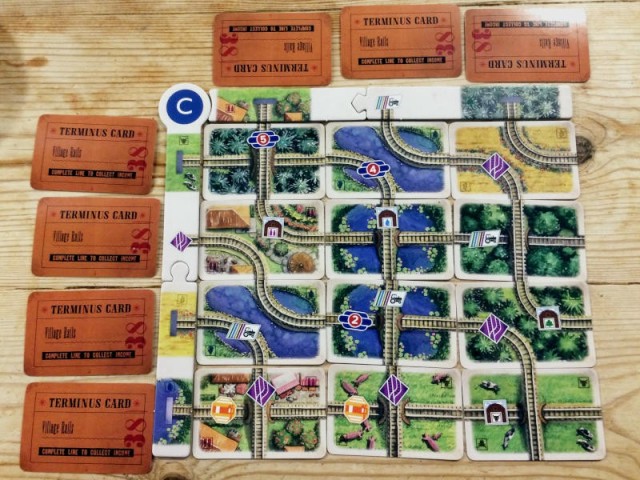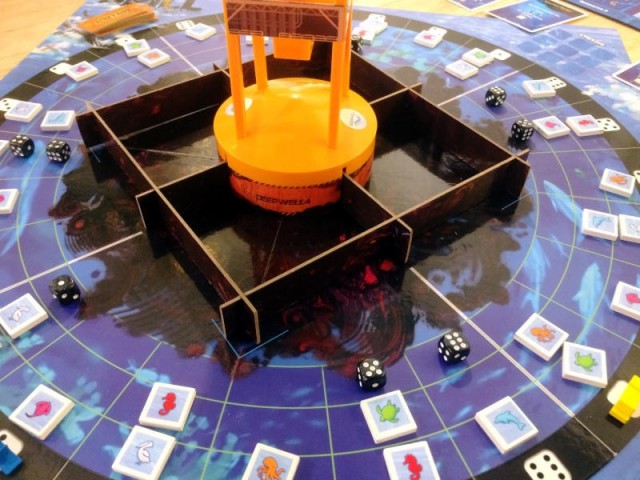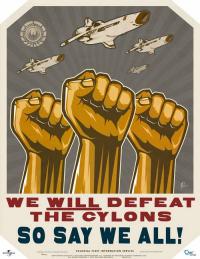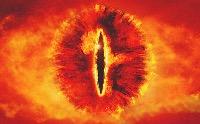One of 2018's best is the new king of its genre.
I'm going to open this review of Ares' new Battlestar Galactica: Starship Battles with a few words of advice. Do not write this game off, assuming that you don't need it because already own a grand or so worth of X-Wing. Do not assume that, like the Star Wars miniatures games, that it is going to inevitably turn into a bloated product line with an insufferable "metagame" and eventual cannibalistic obsolescence. Do not assume that this game does not have currency because the license is for a TV show that ended long ago and rather badly at that. Do not be like I was a few months back and not really be all that interested in this title because it is pure frakkin' dynamite.
Designed by Andrea Angolino (one of the creators of Wings of War, the game Fantasy Flight copy/pasted to create their proprietary "Flightpath" system) with Andrea Mainini, Battlestar Galactica: Starship Battles is the best spaceship dogfighting game on the market, period. I would almost go so far as to call it the best I've ever played - this game solves a lot of problems with the genre while creating new potential with some really innovative concepts. It is a little more complex- in terms of rules, not in terms of keyword interactions or loadout combinations- than the average X-Wing player may expect. But the richer, maneuver-focused gameplay and steeper learning curve buy quite a bit more detail and a stronger sense of piloting fighter craft in a zero-G environment.
The basic chassis of the game is still the same as Wings of War. Players play movement cards to depict the flight path (sorry FFG, that is not a trademark) of their miniature ships, trying to get a firing solution by lining up an enemy in your firing arc. There's a simple dice-based combat resolution, and hits come in the form of cards from a pool of damage chits that may yield 0 damage, cause the target to draw additional chits, or cause critical systems damage thus incurring various penalties. If you play with the Quick Start rules, there isn't really much special or distinguishing here- but stick with it, because once you break out the rules for kinetic movement, rotation, fuel expenditure, tailing, pilot flaws, and so on the FTL drive spools up and the game goes from good to best-in-class.
If you've watched the show, you've probably enjoyed seeing the Colonial Vipers strafe around Cylon Raiders, directional thrusters flaring, guns trained on the enemy while maintaining a forward orientation with directional thrusters. You can do exactly that in this game because of the absolutely brilliant combination of being able to rotate your ship during a maneuver with the effect of kinetic energy. Each turn, you have to set your speed (from -1 to 3) and this impacts which of the movement lines you can use on your secretly chosen card. But the faster you go this turn, the more kinetic energy you may have to deal with on your next turn and your pilot's Skill has an influence on this equation as well. And if you decide to pivot- these models are mounted on custom bases that allow for each model to effectively have both a facing for movement and for the forward arc- then you may find yourself twisting and turning while you continue moving in another direction. Then you can rotate to get moving eyes forward again- but that means too that you might drift right into a planetoid or another ship before you can make the heading change.
Let's say you can't cut it fast enough to avoid a collision. Good thing opted to change your elevation level during the planning phase! This is also decided secretly for each ship on the cool plastic panels for each craft. It's a high kinetic energy move, but moving up and down means that there are four layers of relative orientation represented by adding stems to your ship's base. So in the above example, you can dive under that obstacle and make a sharp climb to avoid it. This game handles vector movement in a highly abstracted fashion, but it is incredibly significant that it handles it at all. Past examples (recalling the nightmarish Attack Vector: Tactical) were too complicated or confusing. This is a simple way to manage the fact that two ships in space can be in any orientation to each other. It's true that your model isn't rolled upside down at 25 degrees and pitched 45 degrees, but those elements were the right things to abstract out of the equation.
Equally simplified is the shooting. There is no ordnance, at least at this point. There's just plain old guns like a Vickers on a Sopwith Camel, and I kind of love it that this is the case right now. No turrets, no EMPs, no torpedoes. You point and shoot, and you can practically hear that muffled gunfire sound effect from the show. But here again, the complexity budget is spent on more interesting things than ordnance type, such as factoring dynamic kinetic energy into combat resolution. Faster targets are harder to hit than slower ones. Some of these concepts have been around in other games, Wings of War included, but when combined with the 3D movement and orientation something new emerges out of all this especially if you are willing to go the extra mile and fold in all of the advanced and optional rules. I love the fuel rules in particular, that introduce the need to budget your moves, speed, and every rotation or elevation change. The pilot attributes are fun and add a little more detail. It all does feel uniquely like a Battlestar Galactica game, even with just two Vipers and two Raiders.
As a starter set, this is one of the best that I've ever seen. I would actually be completely satisfied if this were the end of the line. There aren't that many ships in BSG to represent anyway, just pilots really. Although more is coming including "classic" era ships, I'm hearing, rest assured that the game in this box is robust with lots of options and it is absolutely satisfying. I'm finding that flying two ships is plenty and with all of the pilot options for both the Cylon and Colonial ships you won't be at a loss for interesting match-ups. The "terrain", such as it is, isn't great (just some thin punch-out asteroids and planetoids) and the included scenarios are pretty humdrum, but the rest of the package is outstanding. The rules are well-written. The graphic design is on brand for BSG. The ships are slightly larger in scale than X-Wing, and rather shockingly they actually look better than many miniatures in that popular line. And in a nice bit of fan service, all the corners on all of the paper materials are cut.
I'm raving about this game anywhere and everywhere I can, but admittedly I feel like Zarathustra come down from the mountain trying to convince people of the coming of the Uberspiel. Even if this game turns out to be one of those games that doesn't meet the impossible sales challenge of the leading brand anyone interested in this type of game simply must give it a chance even if it's not supported by in-store play, world championships, and endless forum posts. This is a better game than X-Wing, which I called the best game of 2014 and played fervently for a couple of years. It's better than Armada, which I declared better than X-Wing despite its Cadillac price. The notion of "best" space battle game is a moving target, I suppose, but for right now this game has hit the bullseye by balancing process economy with rules complexity, narrative detail with judicious abstraction, and compelling planning with high stakes action.
Thanks to the fine folks at Ares Games for supporting quality games writing by supplying a review copy. There Will Be Games does not accept any payment or editorial direction from publishers or designers.
 Games
Games How to resolve AdBlock issue?
How to resolve AdBlock issue? 